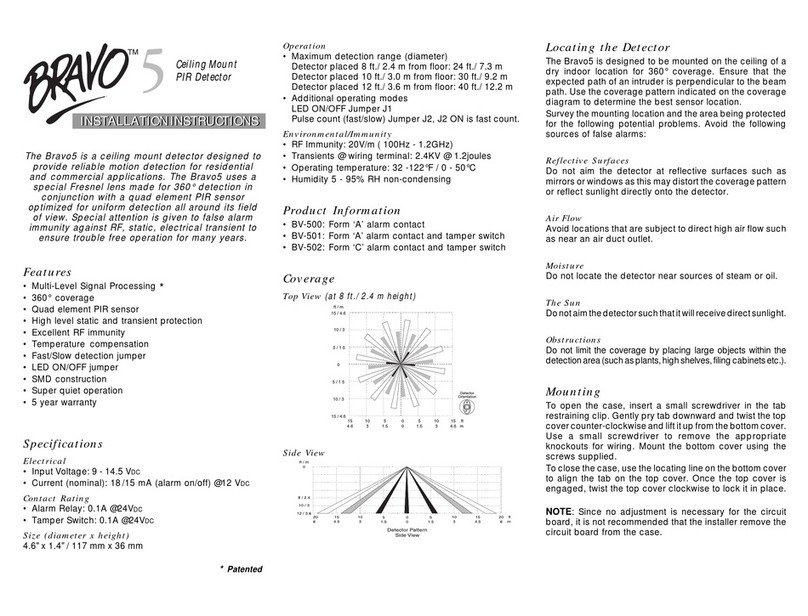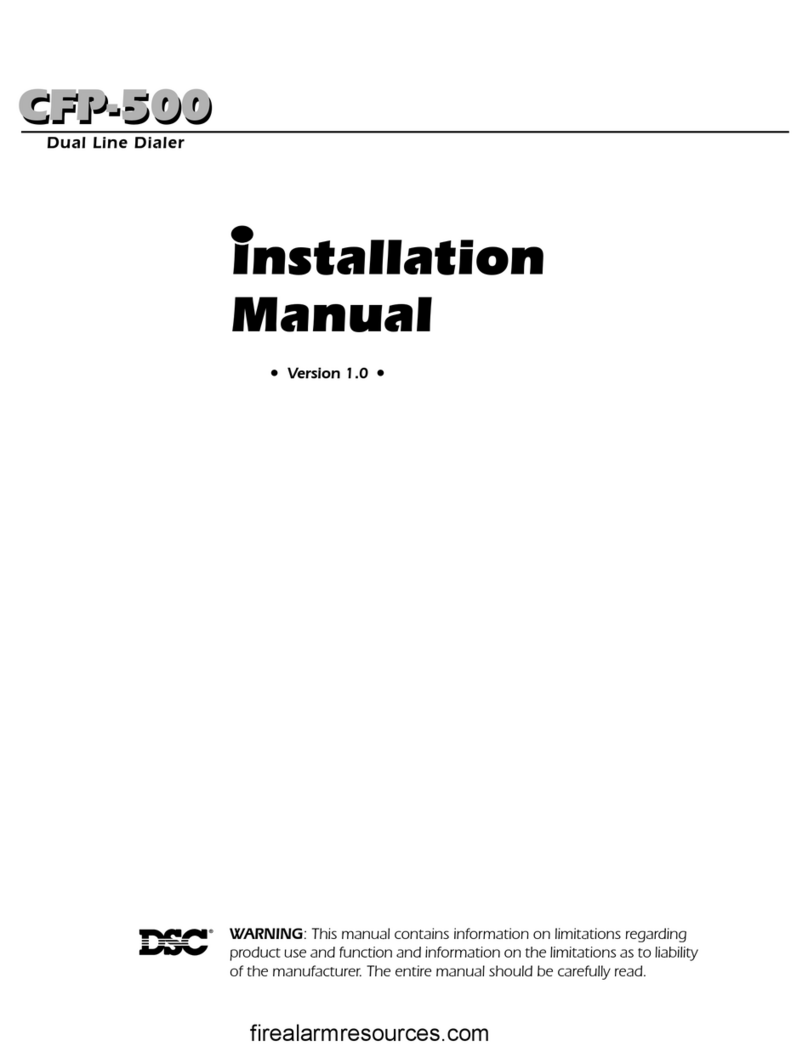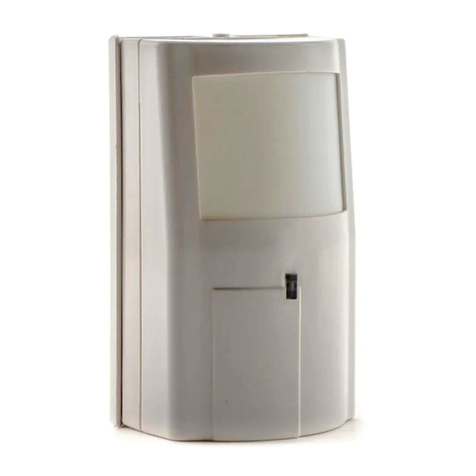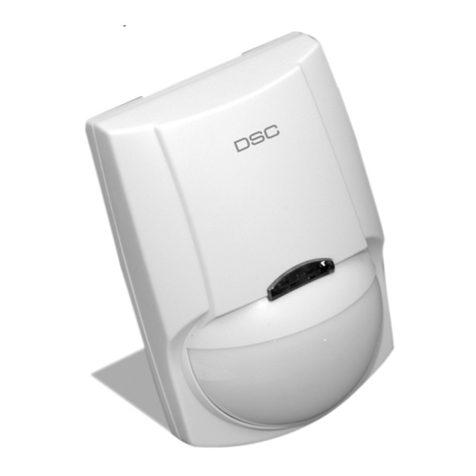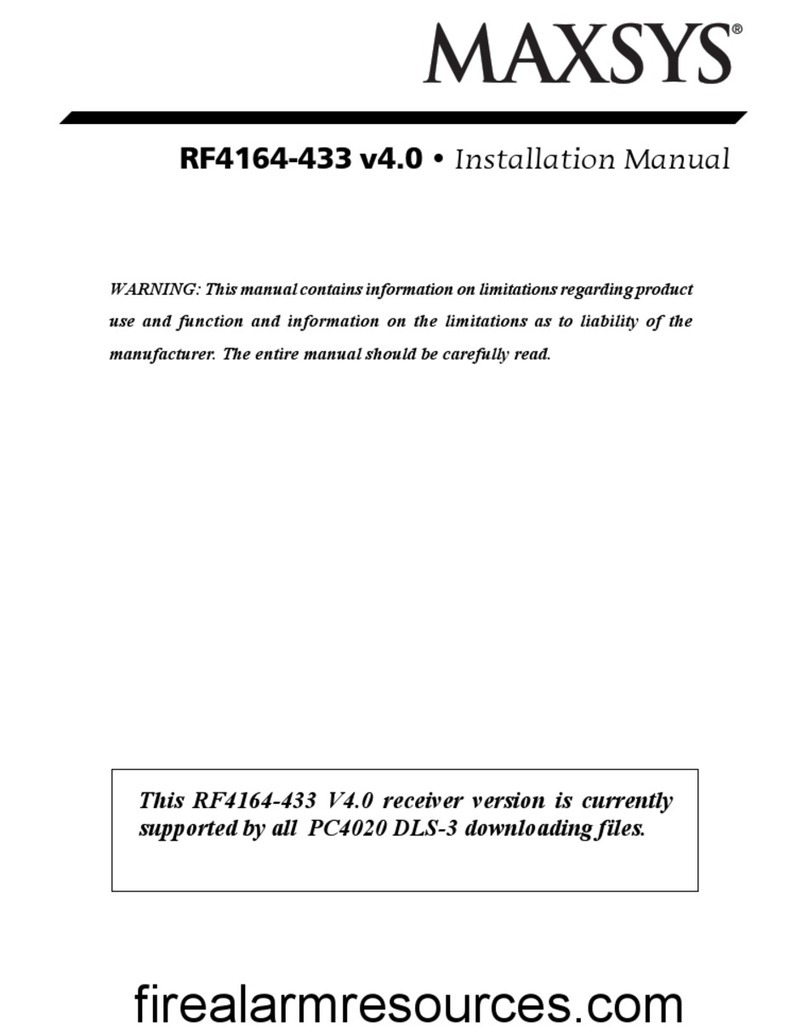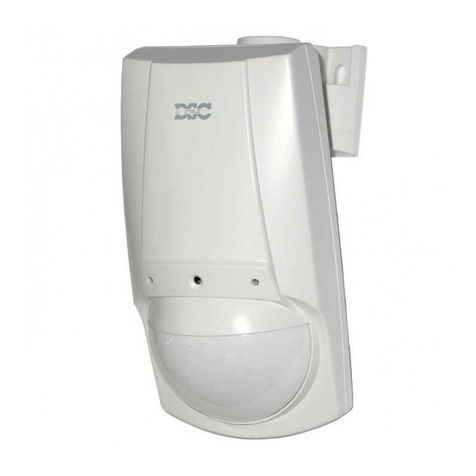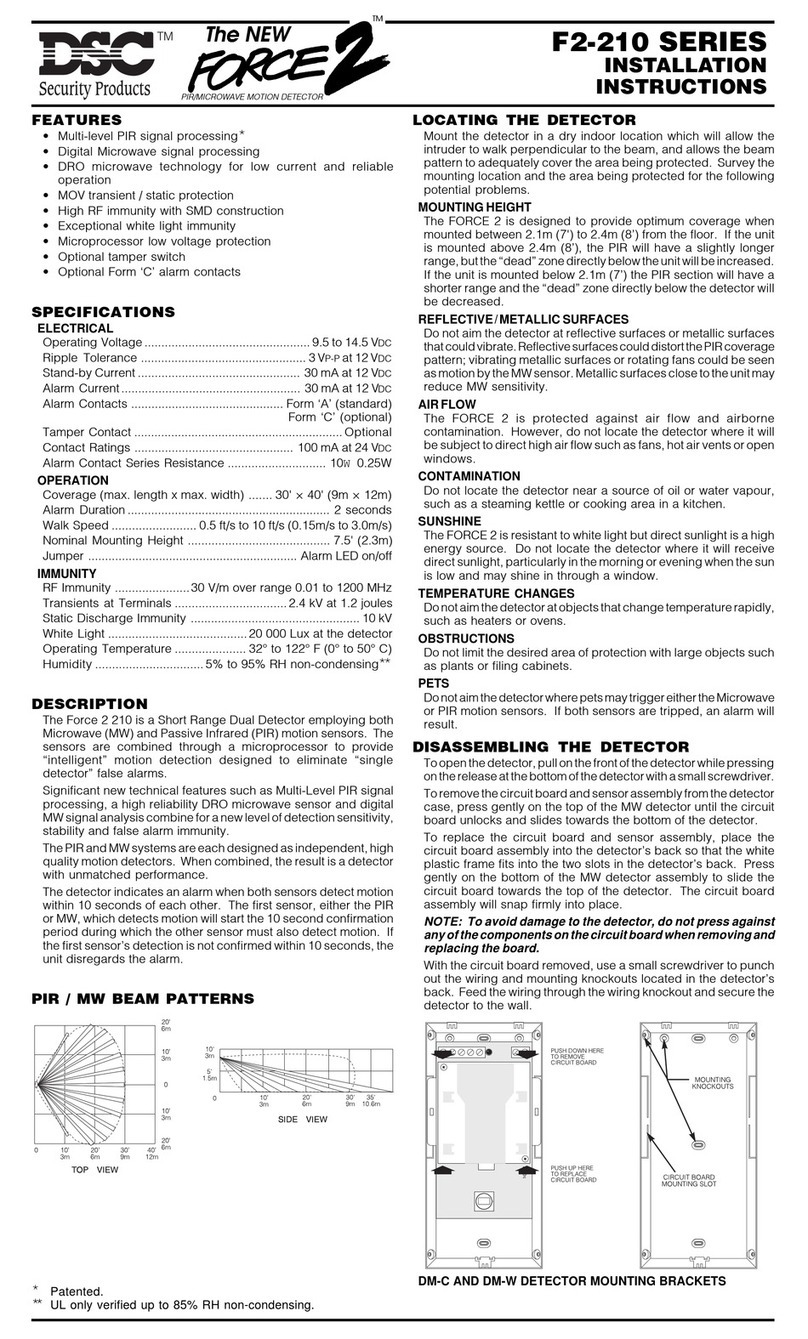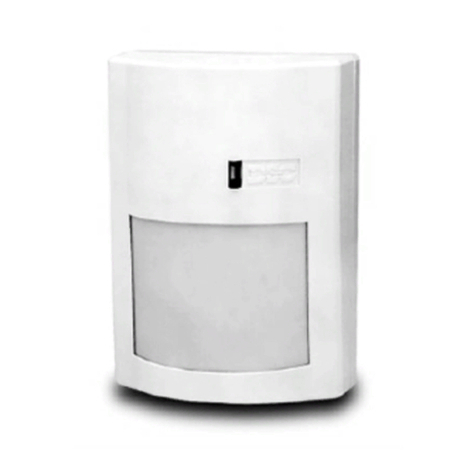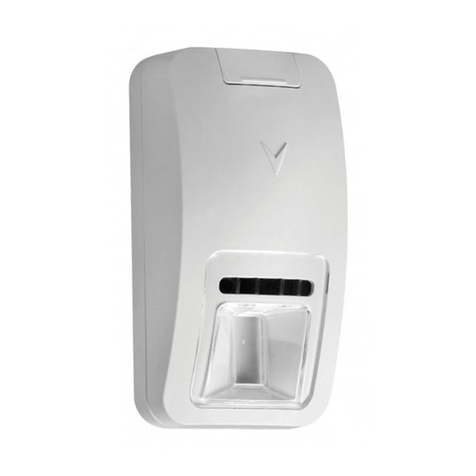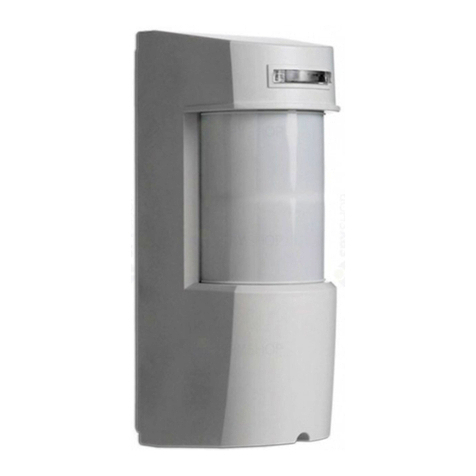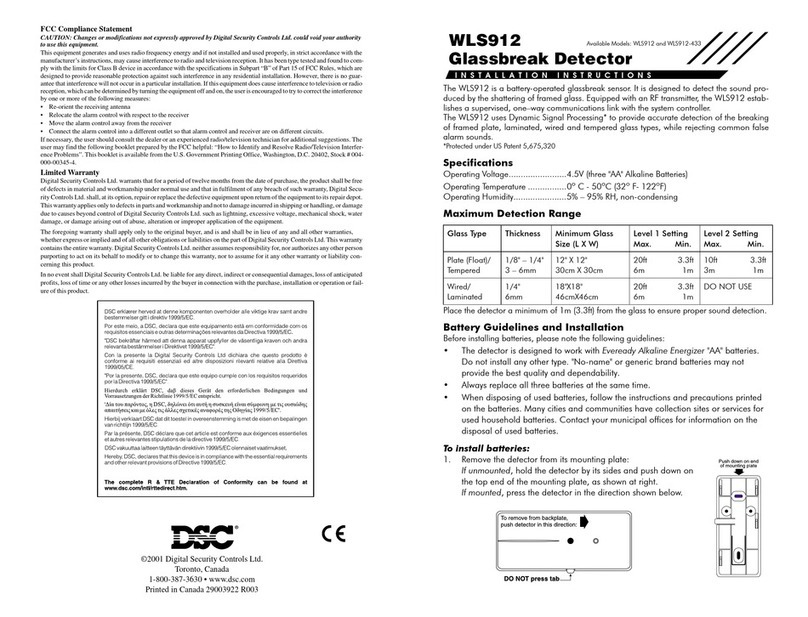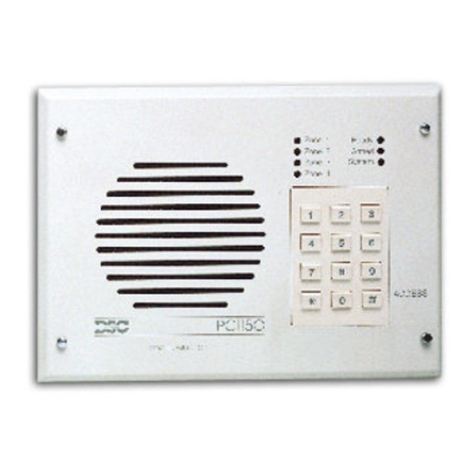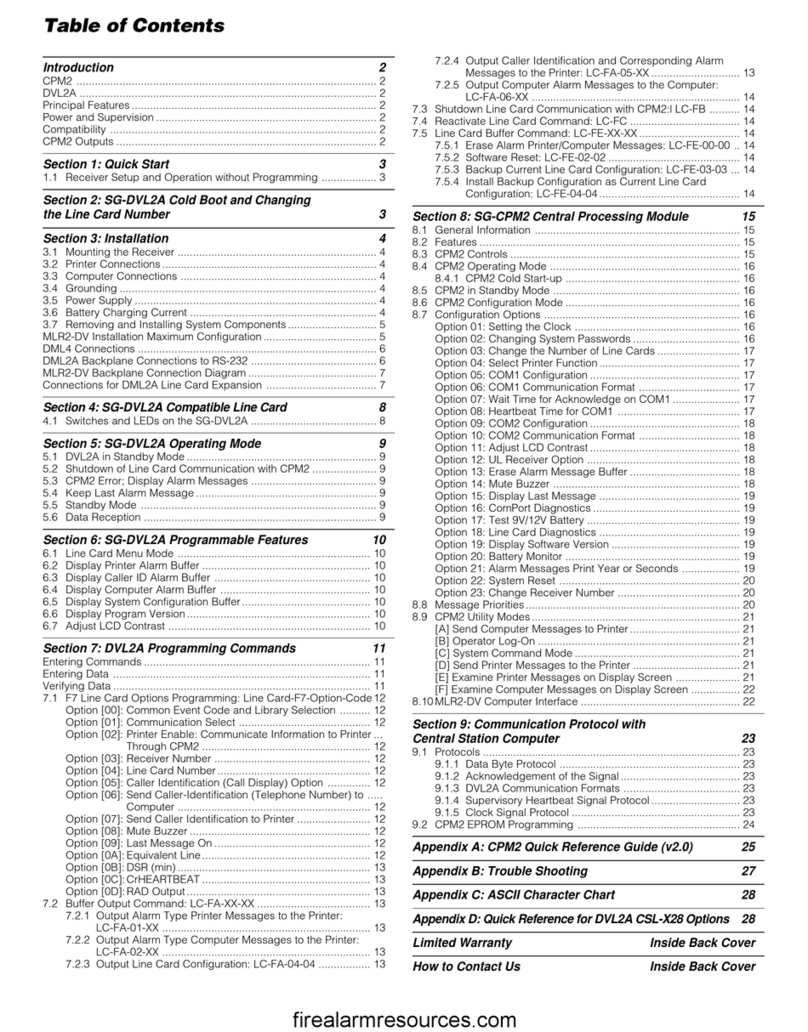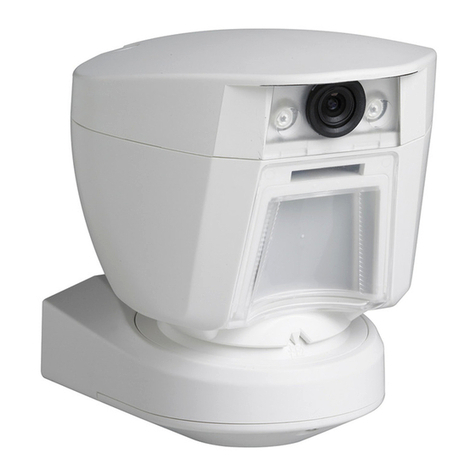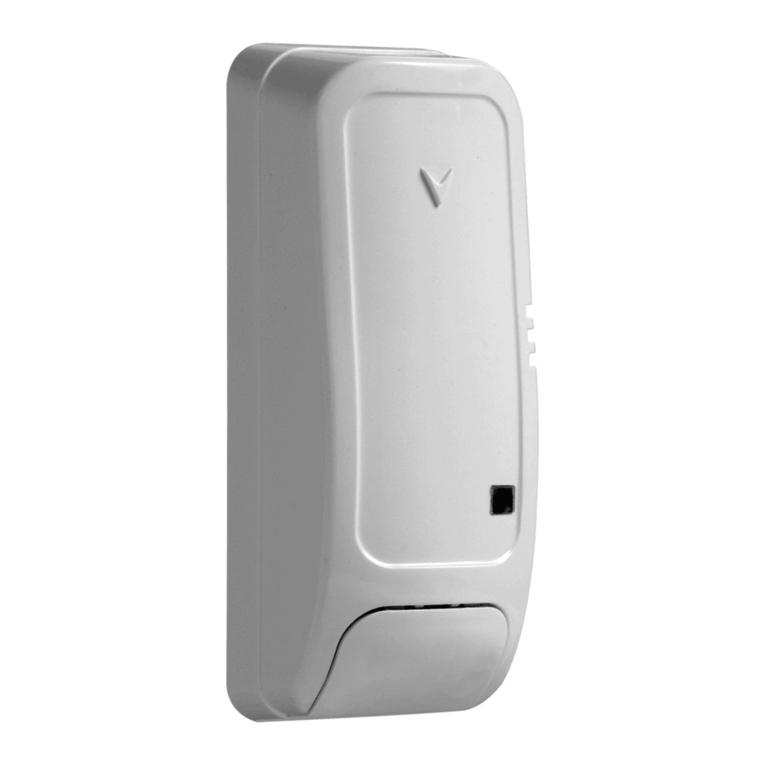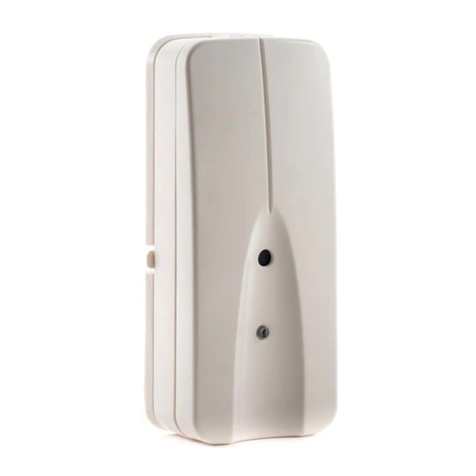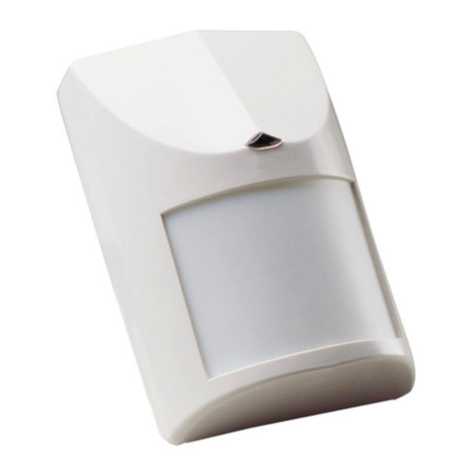
AMA-100
Addressable Glass Break Detector
INSTALLATION INSTRUCTIONS
© 1999 Digital Security Controls Ltd.
1645 Flint Road, Downsview, Ontario, Canada M3J 2J6
Tel. (416) 665-8460 • Fax (416) 665-7498 • Tech. Line 1-800-387-3630
Printed in Canada 29002412 R002
Limited Warranty
Digital Security Controls Ltd. warrants that for a period of twelve months from the date of purchase, the
product shall be free of defects in material and workmanship under normal use and that in fulfillment of any
breach of such warranty, Digital Security Controls Ltd. shall, at its option, repair or replace the defective
equipment upon return of the equipment to its repair depot. This warranty applies only to defects in parts and
workmanship and not to damage incurred in shipping or handling, or damage due to causes beyond control
of Digital Security Controls Ltd. such as lightning, excessive voltage, mechanical shock, water damage, or
damage arising out of abuse, alteration or improper application of the equipment.
The foregoing warranty shall apply only to the original buyer, and is and shall be in lieu of any and all other
warranties, whether express or implied and of all other obligations or liabilities on the part of Digital Security
Controls Ltd. This warranty contains the entire warranty. Digital Security Controls Ltd. neither assumes, nor
authorizes any other person purporting to act on its behalf to modify or to change this warranty, nor to assume
for it any other warranty or liability concerning this product.
In no event shall Digital Security Controls Ltd. be liable for any direct, indirect or consequential damages,
loss of anticipated profits, loss of time or any other losses incurred by the buyer in connection with the
purchase, installation or operation or failure of this product.
Warning
Digital Security Controls Ltd. recommends that the entire system be completely tested on a regular basis.
However, despite frequent testing, and due to but not limited to, criminal tampering or electrical disruption,
it is possible for this product to fail to perform as expected.
The Acuity AMA-100 is an advanced
acoustic glass break sensor, designed to
detect the sounds produced by the
shattering of framed glass. The AMA-100
is the result of an extensive research
program, designed to study the properties
of glass as well as the properties of
sounds produced by the shattering of
framed glass. The result is a detector
which provides exceptional sensitivity and
high false alarm immunity. High quality
manufacturing methods have been
combined with a meticulous final test, to produce a detector which is superior to
any other product of its kind.
Dynamic
Signal Processing* provides accurate detection of plate, laminated,
wired and tempered glass types, while rejecting common false alarm sounds.
The AMA-100 uses a 2-wire connection for power and to communicate with the
control panel. This simplifies wiring and reduces installation cost. The AMA-100’s
low current draw also maximizes the number of devices that can be attached to
an addressable loop.
* Patent Pending
Specifications
Current rating ....................................................... 3.5 mA standby; 5.5 mA with test LED on
Microphone type ............................................................................... Omnidirectional Electret
Dimensions (L x W x H) ................................................ 89 x 64 x 20 mm (3.5 x 2.5 x 0.8 in.)
Operating Environment ....................0°C-50°C (32°F-122°F); 5%-95% RH, non-condensing
Alarm duration .......................................................................................................... 3 seconds
Detection Level........................................................................................................ Jumper J2
Control Panels .......PC4010/4020 v3.x, PC5010, PC5015 v2.X w/PC5100 interface module
Maximum Detection Range
Glass Type Thickness Sizes (l×w) Level 1 Level 2
Plate/Tempered 1/8–1/4" 18"×18" and up 25ft 15ft
3–6mm 46×46cm and up 7.6m 4.6m
12"×12" to 18"×18" 15ft 10ft
30×30cm to 46×46cm 4.6m 3m
Wired/Laminated 1/4"(6mm) 18"×18" and up 20ft Do Not Use
6mm 46×46cm and up 6m Do Not Use
12"×12" to 18"×18" 10ft Do Not Use
30×30cm to 46×46cm 3m Do Not Use
FCC COMPLIANCE STATEMENT
CAUTION: Changes or modifications not expressly approved by Digital Security Controls Ltd. could void your
authority to use this equipment.
This equipment generates and uses radio frequency energy and if not installed and used properly, in strict accordance
with the manufacturer’s instructions, may cause interference to radio and television reception. It has been type tested and
found to comply with the limits for Class B device in accordance with the specifications in Subpart “B” of Part 15 of
FCC Rules, which are designed to provide reasonable protection against such interference in any residential installation.
However, there is no guarantee that interference will not occur in a particular installation. If this equipment does cause
interference to television or radio reception, which can be determined by turning the equipment off and on, the user is
encouraged to try to correct the interference by one or more of the following measures:
•Re-orient the receiving antenna
•Relocate the alarm control with respect to the receiver
•Move the alarm control away from the receiver
•Connect the alarm control into a different outlet so that alarm control and receiver are on different circuits.
If necessary, the user should consult the dealer or an experienced radio/television technician for additional
suggestions. The user may find the following booklet prepared by the FCC helpful: “How to Identify and
Resolve Radio/Television Interference Problems”. This booklet is available from the U.S. Government Printing
Office, Washington, D.C. 20402, Stock # 004-000-00345-4.
• If the windows in question are covered by drapes or blinds, place the tester
behind the closed window coverings. If the drapes prevent reliable detection,
we suggest that the detector be mounted behind the drapes either on an
adjacent wall or on the ceiling.
• If there are multiple windows, or one large window, activate the tester at the
furthest point on the glass.
When the detector responds consistently, it can be permanently mounted using
the supplied screws.






